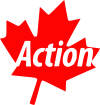The Canadian Action Party will ensure that its Monetary Reform policy found below is enforced.
Monetary Reform Policy
- Reinstate the mandate of the Bank of Canada as created by the Bank of Canada Act 1935.
- Immediately end the government borrowing 95% of its needs from the private financial system.
- Repay the debt over time using low interest funding from the Bank of Canada.
Benefits
- Low interest Infrastructure funding would spur the economy.
- Creation of good secure jobs with benefits.
- Income tax could eventually be abolished.
- Property taxes decreased due to lower financing costs to the municipalities.
- Pensions could be increased.
- Tuitions reduced for education by larger federal student grants or loans with no interest.
Canada must regain control of the issuance of its currency if it wishes to be a Sovereign Democratic nation.
“Once a nation parts with the control of its currency and credit, it matters not who makes the nation’s laws. Usury once in control, will wreck any nation.
Until the control of the issue of currency and credit is restored to government and recognized as its most sacred responsibility, all talk of Sovereignty of parliament and of democracy is futile.”
William Lyon MacKenzie King
Truly those who control the money control everything. Today’s private bankers are the ones running this country because they are in control of our monetary system.
Short History of The Bank of Canada
The Bankers in the USA formed their privately owned federal reserve in 1912 and by 1929 put North America into a depression. Our Government in Canada recognized this and created the Bank of Canada to take back control of our own currency. They opened the bank in 1938 as a result of the Bank of Canada Act of 1935 and funded Canada virtually debt free with little or no inflation until 1974.
Then in 1974 the governor of the Bank of Canada – Gerald Bouey – under international pressure agreed to a deal with the IMFs’ newly created Bank of International Settlements (Basel 1 and eventually 11 and 111) and stopped issuing money to the Federal Government, instead borrowing from international banks and investors at a high compounding interest rate. Within a decade our national debt spiraled from $20 billion to $588 billion.
Today Canada’s federal debt according to statistics Canada is around $1.1 trillion with compound interest of $60 billion reappearing every year.

